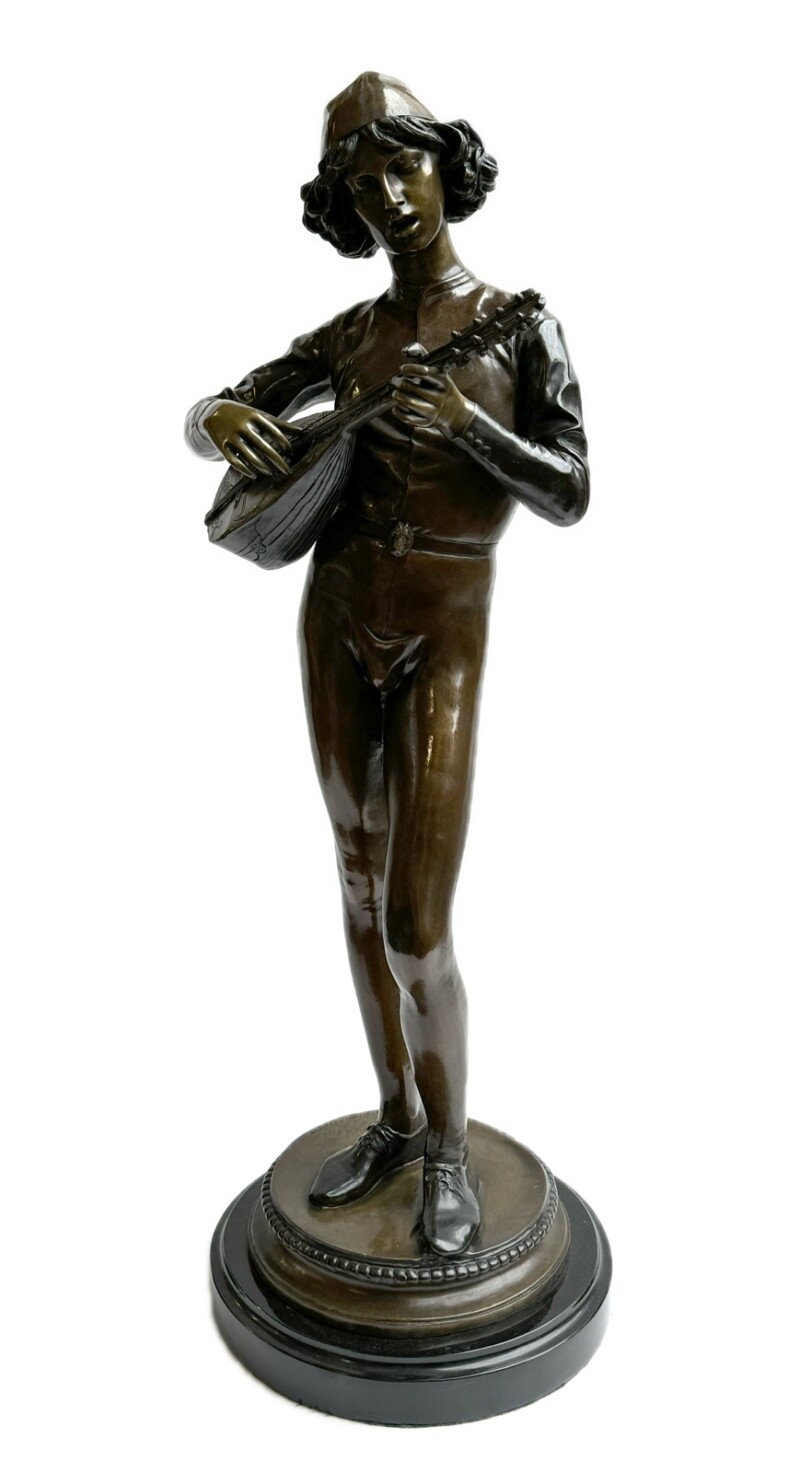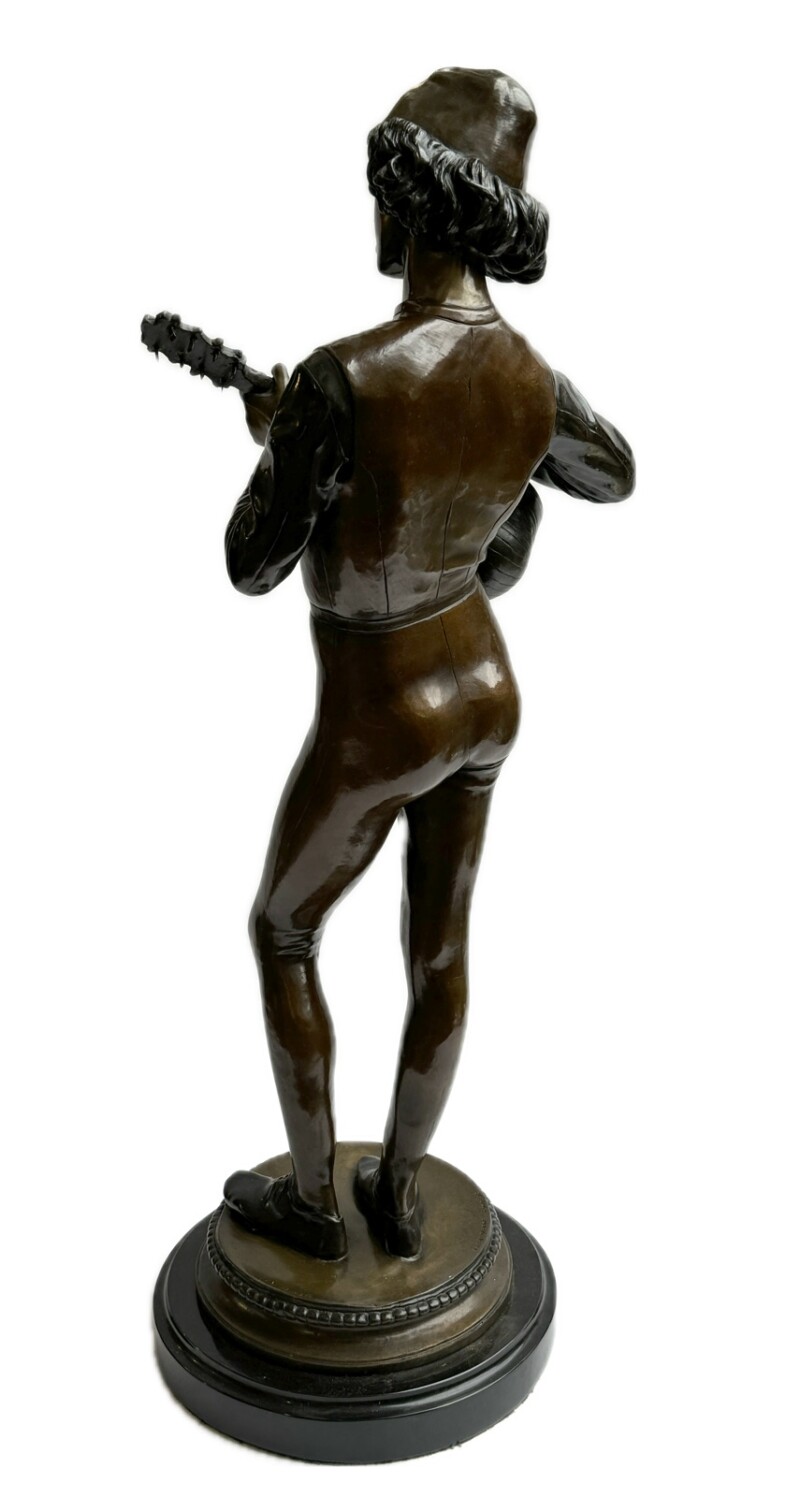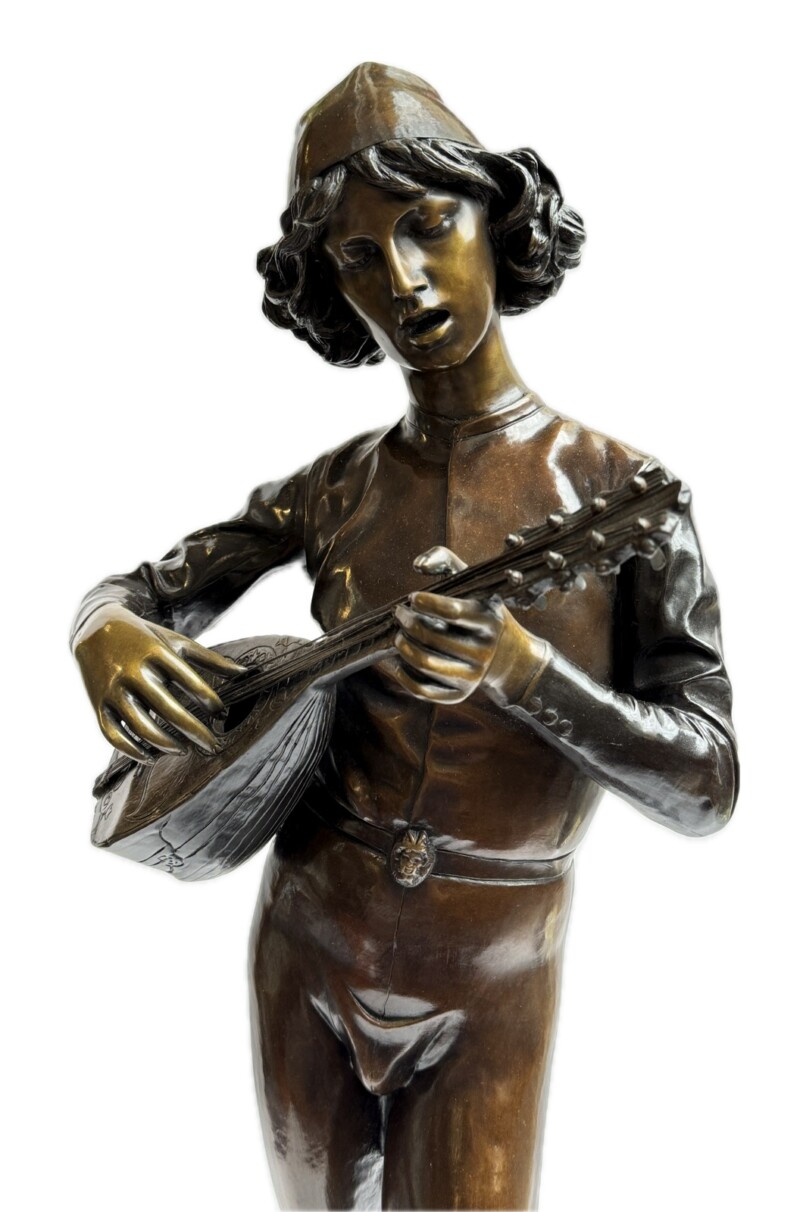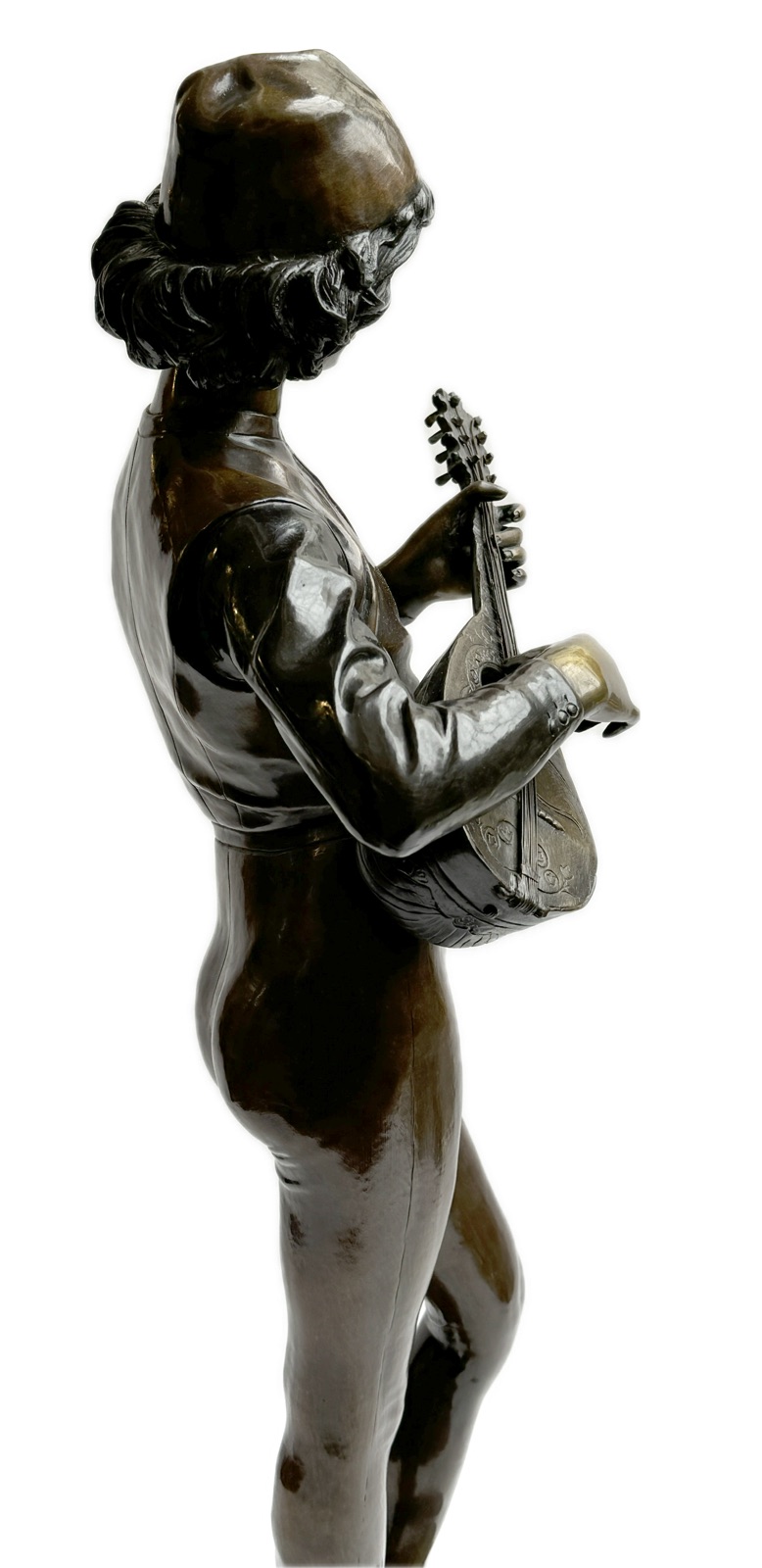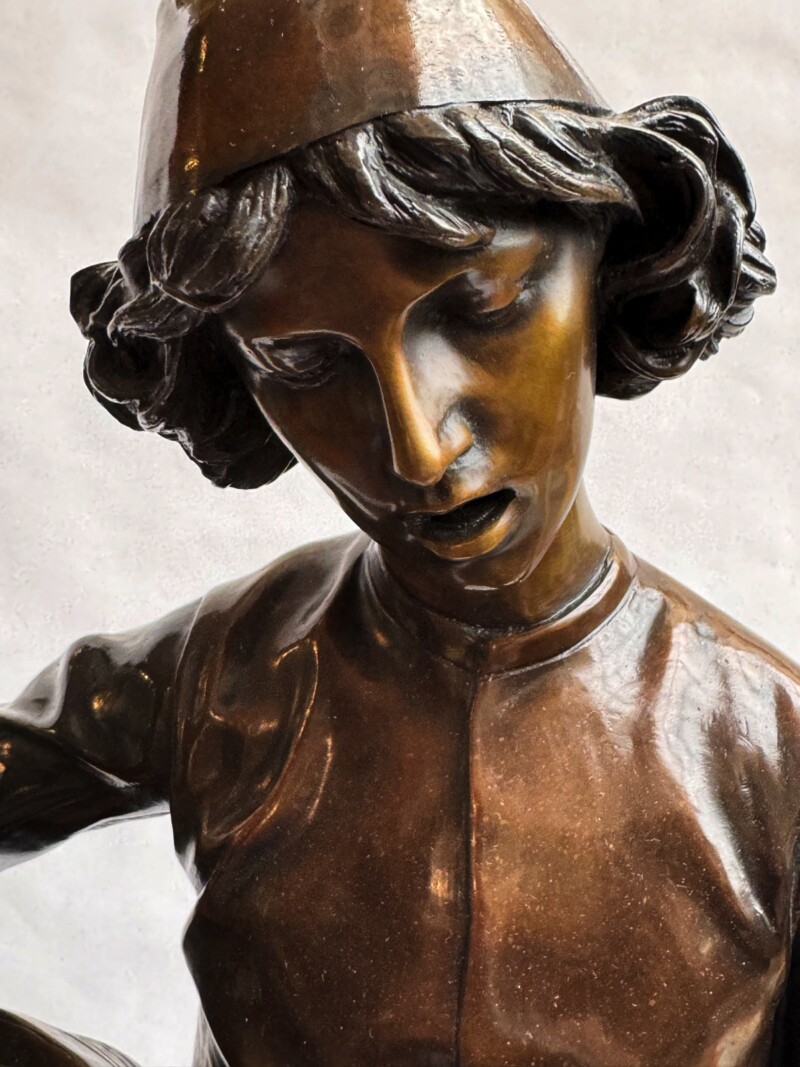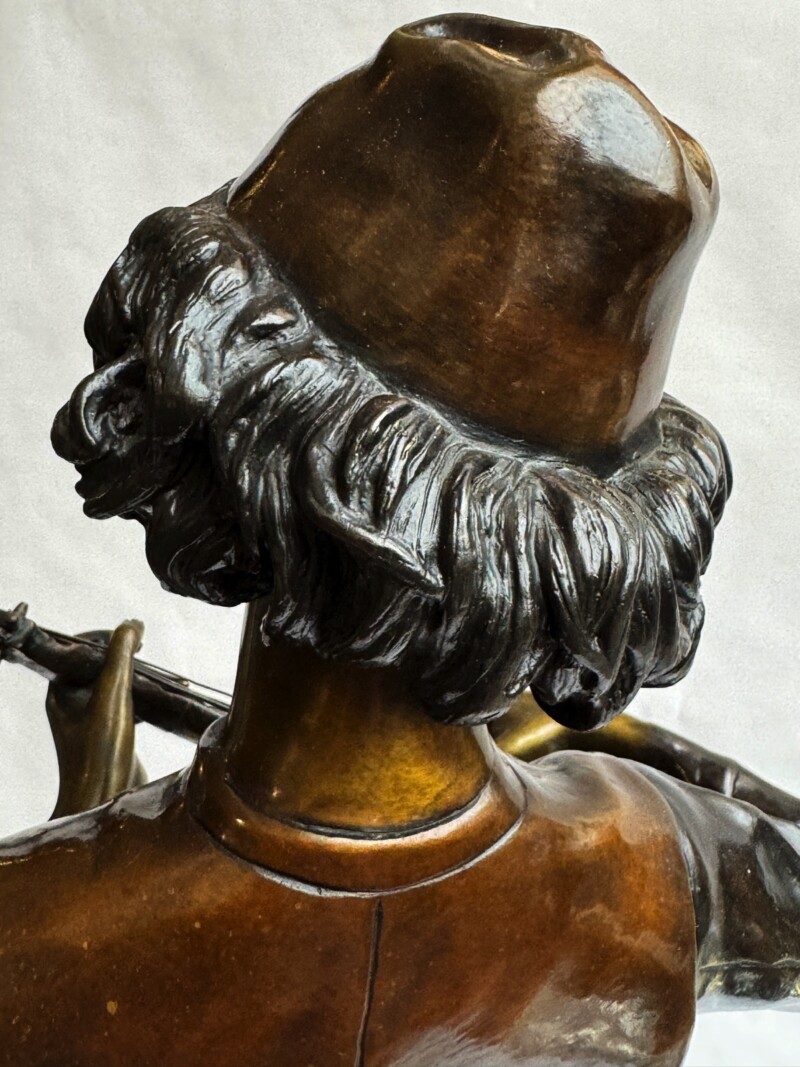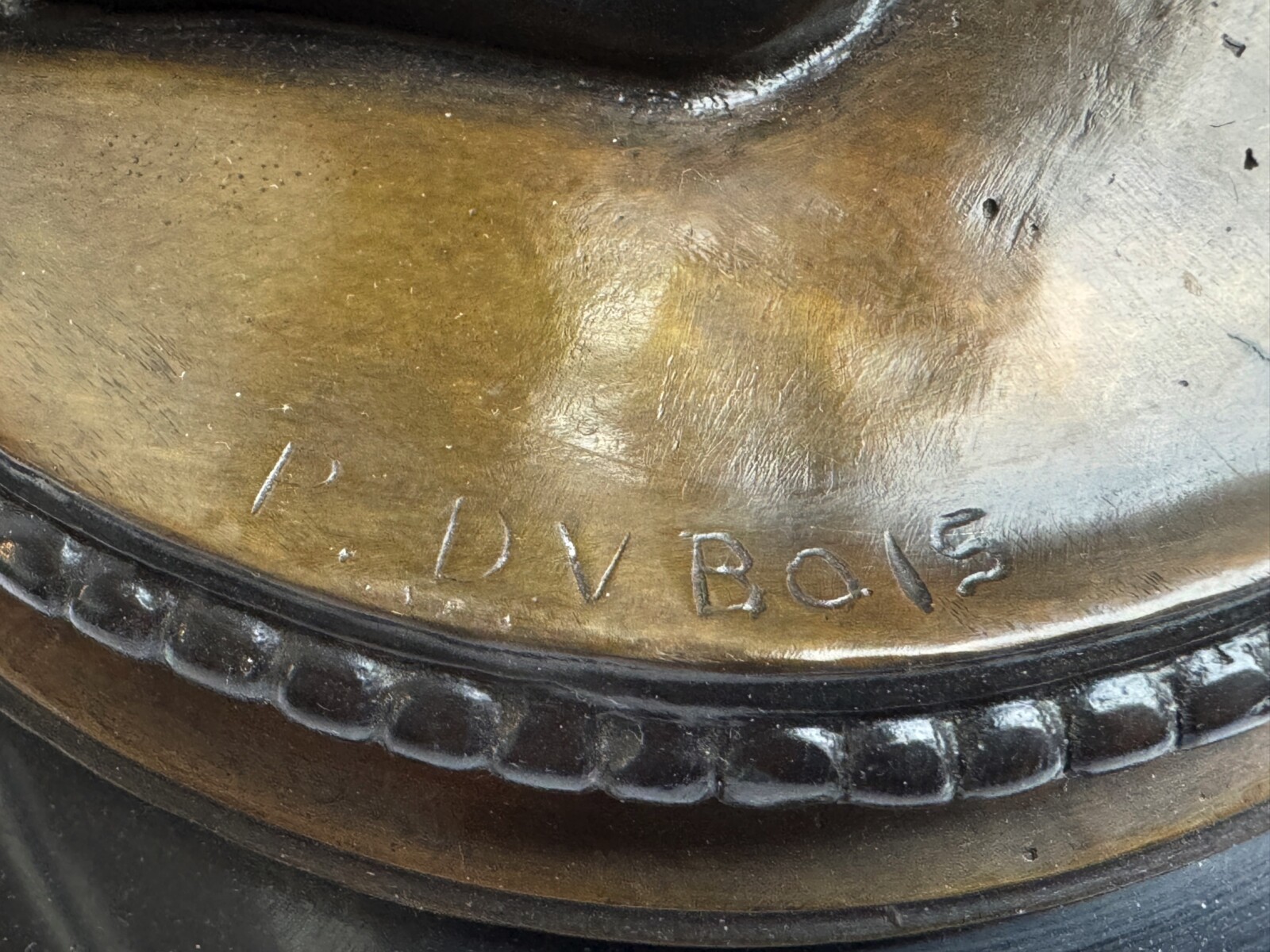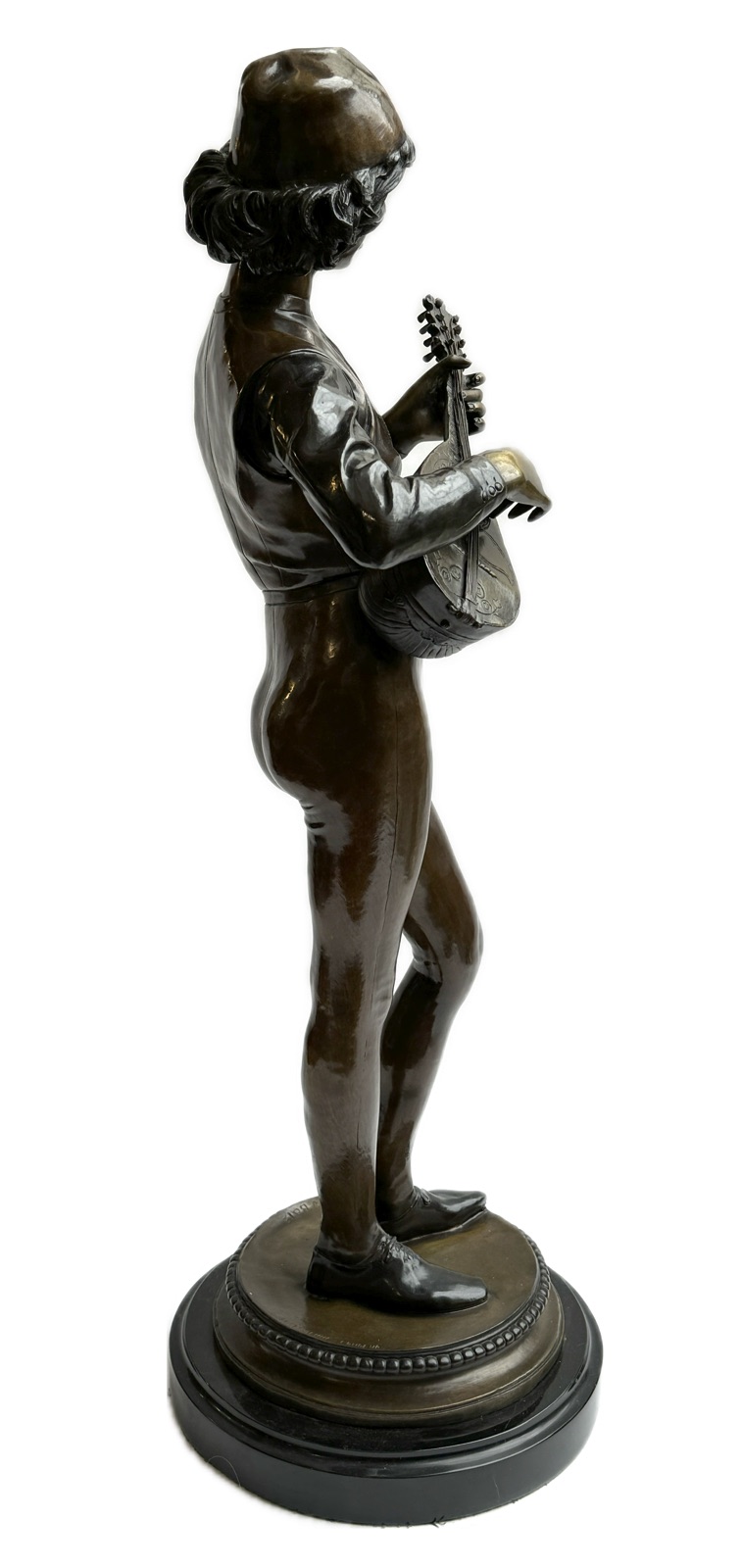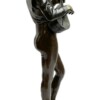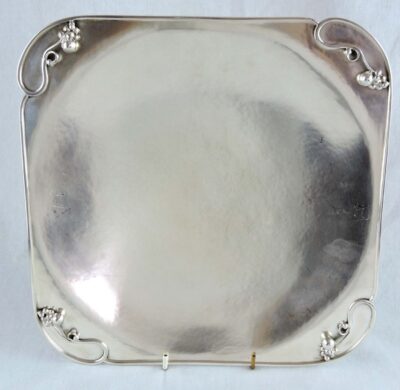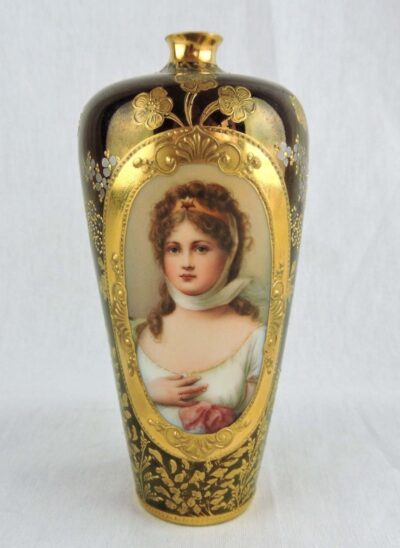19th Century French Bronze Statue of “Florentine Singer” by P. Dubois & F. Barbedienne Circa 1880 – 31 inches high
v** SOLD ARCHIVES **vBeautiful patinated bronze ” Florentine Singer ” sculpture, inspired by the Italian journey of Paul Dubois. The plaster model was exhibited at the Parisian Salon in 1865 and won the Honor Medal. The first bronze cast was purchased by Princess Mathilde. It was then added to the famous bronze-caster Barbedienne’s catalogue and edited from 1865 to 1953 in six heights – 39cm to 115cm- thanks to the Collas mechanical reduction system.
Paul Dubois (1827-1905) entered the Paris Beaux-Arts School in 1858. He exhibited at the 1865 Salon the Chanteur Florentin, illustrating Florentine sculpture, observed after his journey in Italy. This work, cast that time in silvered bronze, was exhibited at the 1867 Paris Universal Exhibition (now preserved at the Orsay museum). Dubois’ success brought him many commissions, both private (Portrait of Duc d’Aumale) and public (Jeanne d’Arc, in Reims). Appointed curator at the Luxembourg museum in 1873, Dubois became also a member of the Institute and finally headmaster at the Beaux-Arts School in 1878.
Born in 1810, Ferdinand Barbedienne started at n°30 boulevard Poissonnière in Paris one of the most famous 19th century artistic bronze casting companies. He died in 1892. In addition to his personal production, he worked for famous old times artists or contemporary sculptors such as Auguste Clésinger, Albert-Ernest Carrier-Belleuse and Louis Barrias. The success of Barbedienne’s firm brought him many official commissions, such in about 1860, as Barbedienne supplied bronzes for furniture for the Pompeian Villa of Prince Napoleon, located avenue Montaigne in Paris. Barbedienne’s production was always highly esteemed and he was, himself admired by contemporary art critics who compared him during the 1878 Universal Exhibition to a ” prince of industry and the king of bronze-casting “. His glory did not decline with the passage of the time, for at the Universal Exhibition of 1889 the critics thanked Barbedienne for the example he set for other bronze-casters by the perfection of his bronzes.
Dimensions: height 31″ x width 12″ x diameter of base 10.5″

